Conditional Content
Always be relevant and discover new possibilities.
We are all competing for the attention of our users and customers. Facebook, Instagram, or Twitter are always just a tap away. So if you got something to say, it better be relevant or helpful for the recipient.
The key is to consider the user's situation and always deliver the content that best meets this situation. Examples:
- The breakfast menu is not useful in the evening.
- Is she a new customer or a regular guest?
- Do you want to display other content for children than for adults?
- Excursion tips should automatically adapt to the weather forecast.
xamoom offers a flexible and powerful tool: conditional content – content that is delivered under a specific condition.
Static vs. dynamic URLs
xamoom uses URLs not primarily to identify pages but places, objects, or campaigns – so-called spots. The content behind these URLs can therefore vary – they can be changed manually.
Example: A marketing manager wants to swap the page behind the QR code on a product. In traditional content management systems, she must override the existing page.
With xamoom, she only changes the page at the spot. On the right side of the spot editor, under the name, you will find the selection box for the page. Search for the new page and update the spot. Done.
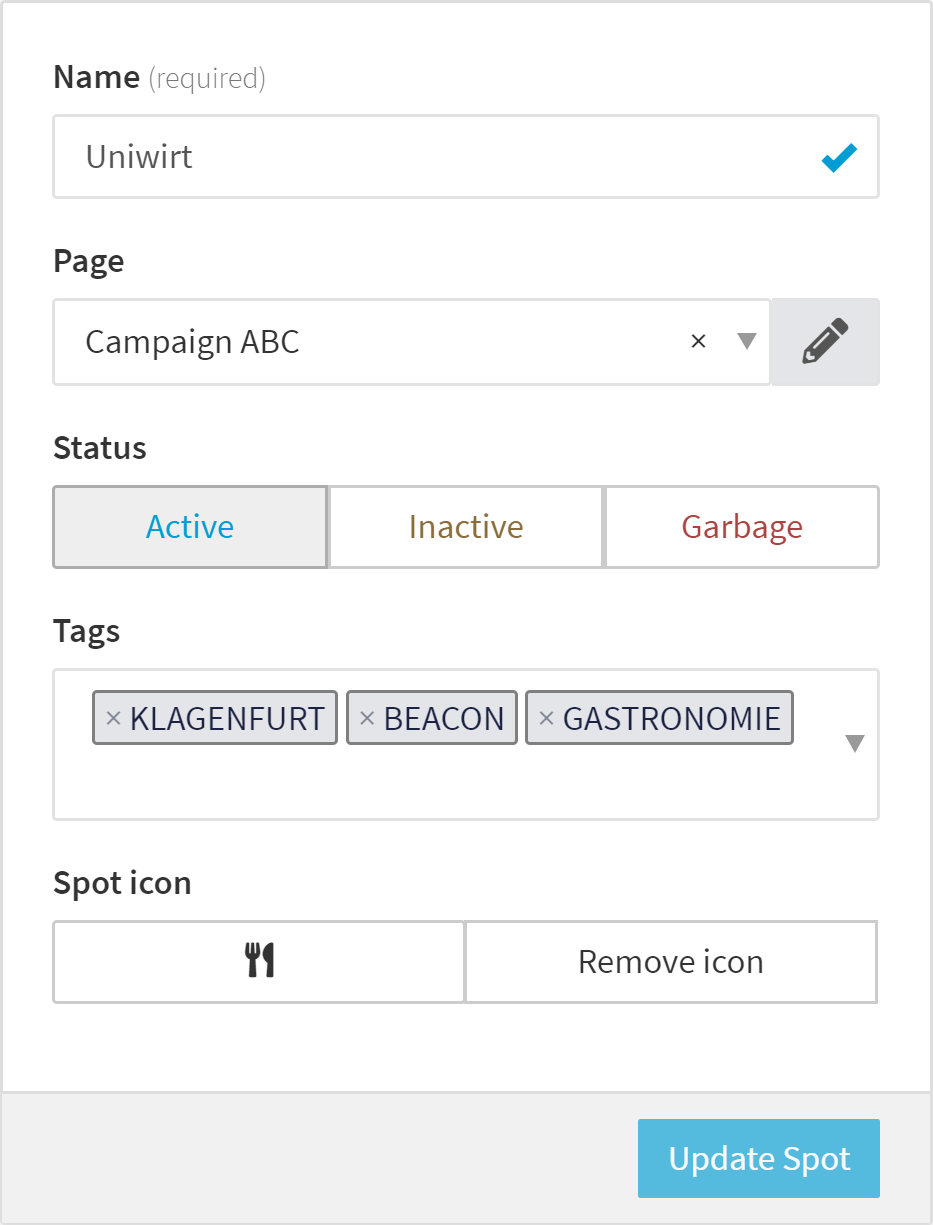
Depending on the situation of the user or external circumstances, the content can change automatically or be rule-based.
It does not take countless QR codes, NFC tags, or iBeacons. One is enough because the content is dynamic, and it changes to whatever scenarios you can imagine:
- Breakfast menu until 10 o'clock, afterward the lunch menu
- Other content during the Soccer World Cup than afterward
- Regular guests receive perks, new guests marketing info
- Varying information on the first, second, third, ... scan of a QR code or contact with an iBeacon
- Own content on the QR code, NFC tag, iBeacon, etc. which supports app marketing using the mobile web
- Premium information for the first x visitors
- Stories are adapted for children and adults.
- Different excursion tips depending on prevailing weather
Except for the last two examples, all others work out of the box. They are integrated into the core product and are available on all supported platforms.
With concatenations (AND or OR), an enormous number of scenarios are conceivable.
How it works
You need to activate this functionality first in the settings. Then you switch back to the spot where the campaign is to be created.
The functionality of such campaigns comes with spots because they have markers – that’s what we call URLs (for QR or NFC) and IDs (for iBeacons or barcodes).
Each spot has a standard page (in the example above: “Campaign ABC”). It is always displayed if none of the conditions defined later apply.
The next step is to select a page to be displayed under the condition to be created.
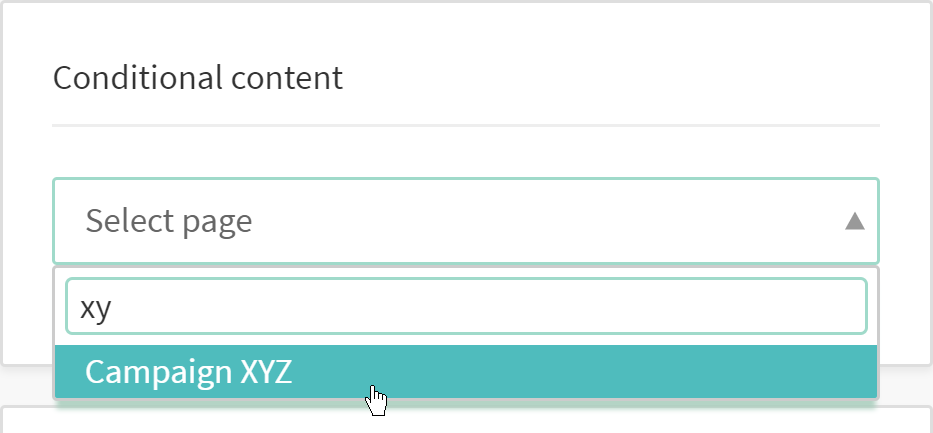
Afterward, the dialog will open, with which the condition will be created.
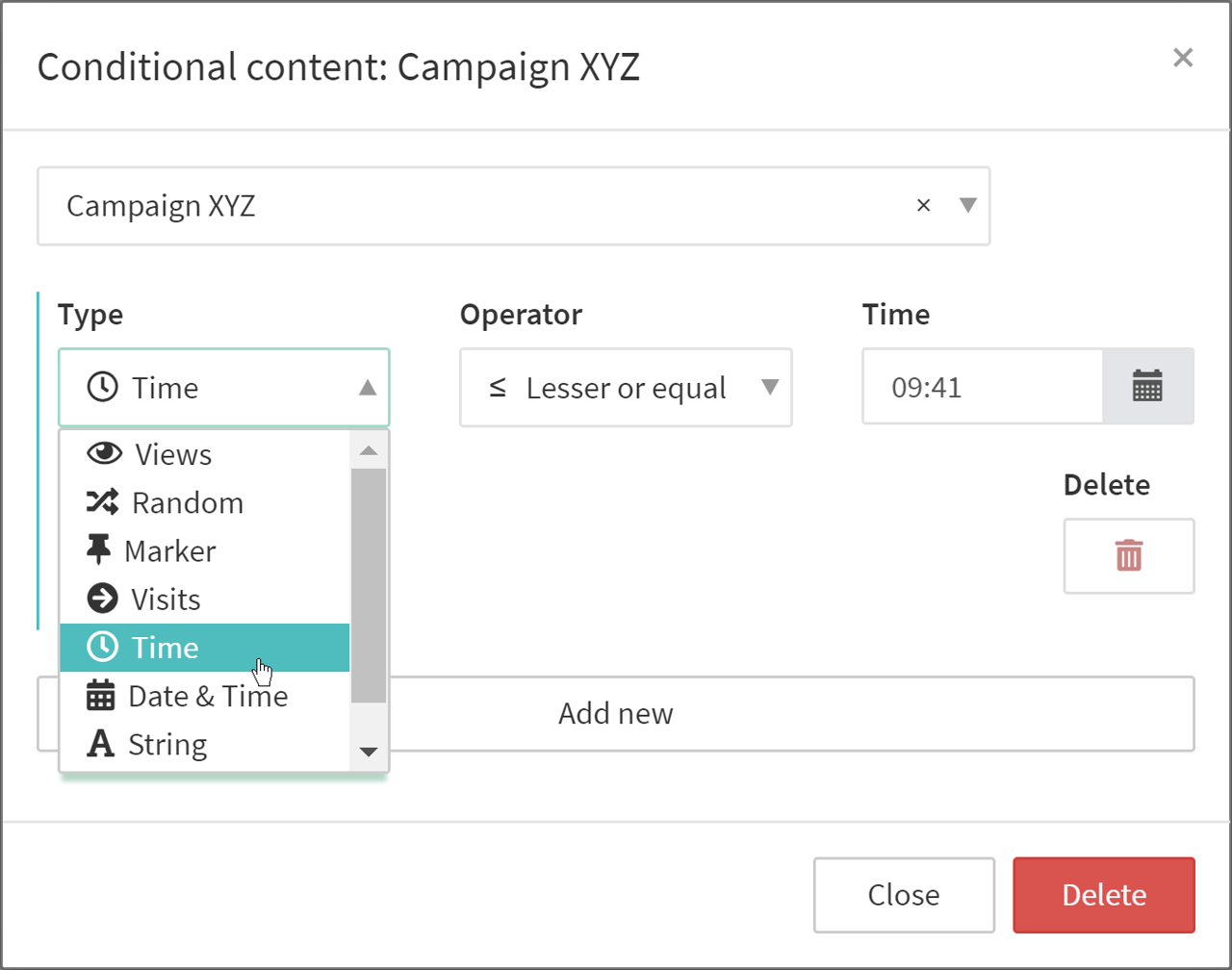
This example displays the “Campaign XYZ” page until (less than) 09:41. Before that, the page “Campaign ABC" is displayed.
Attention: The time-based options are based on the respective local time of the user. 09:41 means something different in New York than in Germany.
A condition is deleted with a click on the button “Delete”.
Attention: The condition is only saved by saving or updating the spot.
What are the possibilities
xamoom will create new variants upon customer demand. If you have an idea, send us an email at support@xamoom.com.
Currently, we offer
- Views: How often can the alternative page be displayed? The value specifies the maximum number of page impressions. After that, only the default page is displayed again. For example, you control the maximum number of possible winners.
- Random: You select a probability (in percent) that displays the selected page. This is a true random number generator. For example, if you choose “50” as the value for 50%, then the probability over time will be 50 percent. You can best compare this with rolling dice.
- Marker: The operator allows equal or unequal. Possible values are QR, NFC, Geofence, Custom Marker ID, and iBeacon.
- Visits: This point brings a temporal component. You can set that regular visitors get other content than first-time guests. Someone who has been there x times lately (today, this week, these months, in the last 3/7/30 days, always) can be rewarded with a coupon. All other (rare guests) will not get a coupon.
- Time: Before or after a certain time (local time of the user).
- Date & Time: Before or after a certain date and time (local time of the user).
- String and Number are aimed at developers who can use them to develop concrete solutions.
- App vs. Web lets you decide what content app users get vs. those who have not yet installed the app.
What combinations are possible
You can combine several conditions with AND or OR – the Boolean Algebra sends its regards.
The following example displays the Campaign XYZ page only if a guest has been there five times in the last seven days, but only after 6 pm.
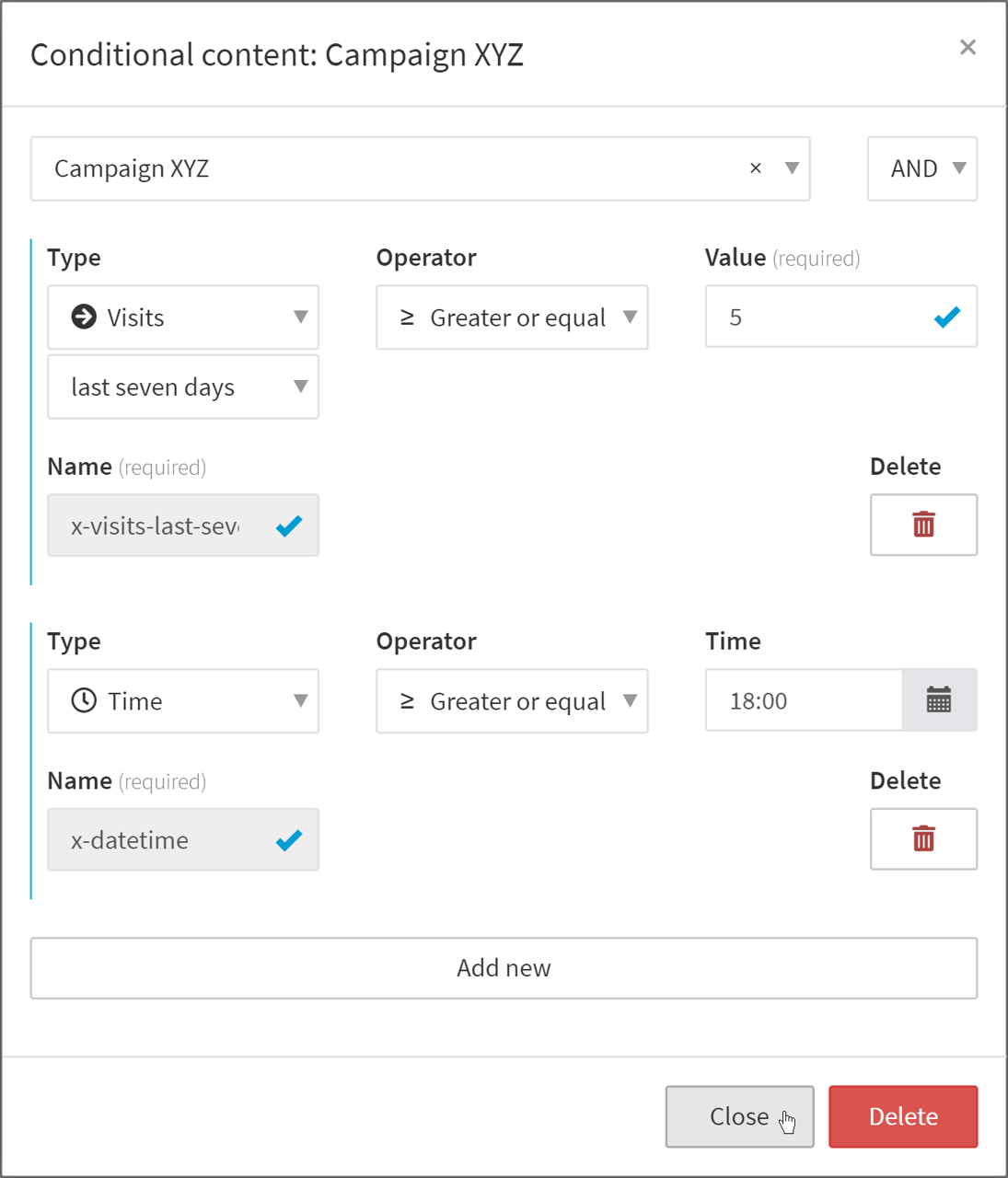
If you link these two conditions with OR, the “Campaign XYZ” page will only be shown to regular guests before 6 pm. After 6 pm, however, to every user.
But there can also be several conditions next to each other. So it would be conceivable that from 00:00 to 12:00 o'clock, campaign 123 is served, followed by campaign XYZ from 12:00 to 18:00 and campaign 465 from 18 to 22:00. For each page, a condition is created (from to and greater than or equal to the same).
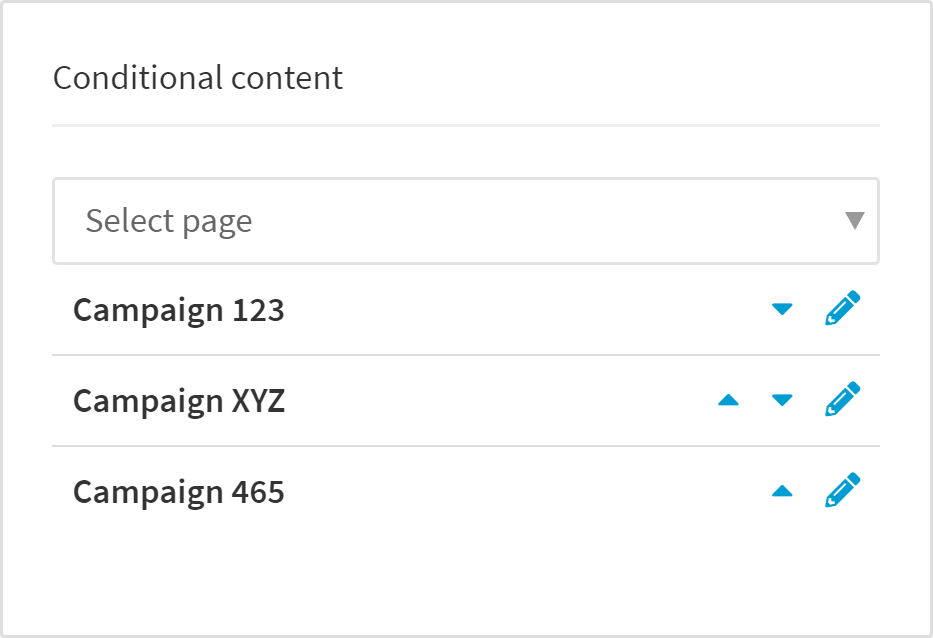
If no condition meets – from 11 and 12 pm – the standard page (campaign ABC) is displayed.
Because any conditions and pages can be nested, any number of target groups can be served individually. If more than two conditions are present, they can also be prioritized. Higher-priority pages continue at the top.
Use the arrows to regroup and the pencil icon to edit the condition.
Example: Sweepstake
You want to run a raffle or sweepstake. And every tenth visit (or scan by QR or NFC) should lead to a profit. However, a maximum of 100 prizes can be won.

Therefore, we choose Random and Views – each with an operator “Lesser or equal”. Both conditions are linked with an AND.
Attention: There are exactly 100 impressions of the “WON”-page allowed. Impressions from the past count as well. Therefore, it is advisable always to clone this page and, if necessary, include views for testing purposes.
Example: Loyalty
With xamoom, it is also possible to identify loyal customers. For example, an app could serve a different page if a guest visiting more than five times during the last seven days.
The campaign looks like this:

The following are used: the type “Visits”, the operator “Greater or equal” and the value 5.
If you want to reward – as in this example – only app users with always activated Bluetooth, you could optionally still iBeacon as a marker over an AND connection presuppose.